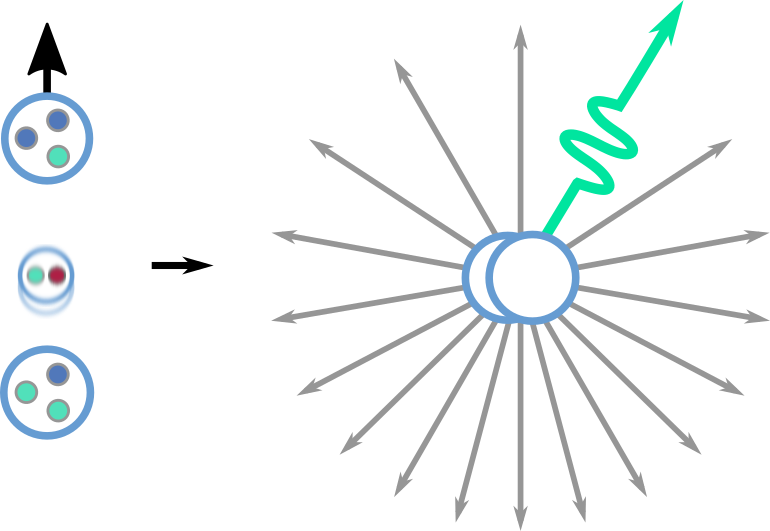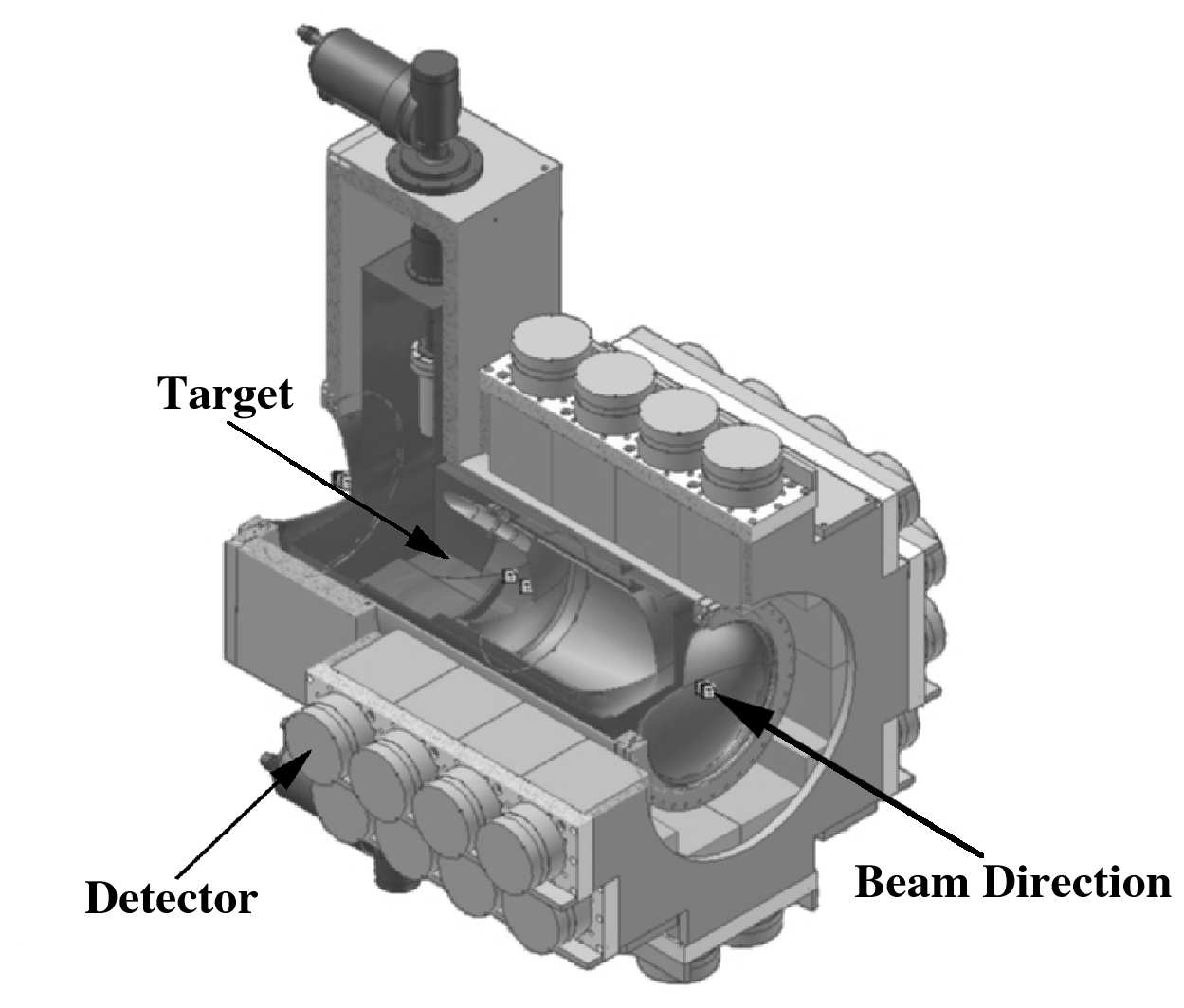Resolving the weak force: ASU postdoc is co-author in research breakthrough

Using a highly precise neutron experiment, conducted at the Department of Energy’s Oak Ridge National Laboratory (ORNL), experimental physicists analyzed gamma rays to find a particular change in the interaction between a proton and a neutron.
For the first time, a team of scientists has isolated and measured the weak force between protons and neutrons within the nucleus of an atom.
Using a highly precise neutron experiment conducted at the Department of Energy’s Oak Ridge National Laboratory (ORNL), experimental physicists analyzed gamma rays to find a particular change in the interaction between a proton and a neutron.
Their observations, published in Physical Review Letters, describe the successful measuring of a mirror-asymmetric component of the weak force.
This force is one of the four known forces of nature: strong force, electromagnetism, weak force and gravity. While the strong force binds together the quarks that make up neutrons and protons, the weak force gives rise to more subtle phenomena such as radioactive decay.
The ongoing effort to measure this particular interaction is known as the NPDGamma experiment and is the culmination of decades of work performed by scientists worldwide.
Arizona State University physics alumnus David Blyth joined the collaboration in 2012 and served as a key parallel analyzer on the experiment, identifying crucial data signals that contributed to the successful interpretation of the results.
James David Bowman of ORNL and William Michael Snow of Indiana University were the co-principal investigators, and Blyth is a lead co-author of the published study, along with Jason Fry, of the University of Virginia and IU; and Nadia Fomin of the University of Tennessee, Knoxville and Los Alamos National Laboratory.
A total of 64 individuals from 28 institutions around the world were involved in this research, which produced more than 15 PhD theses, including Blyth’s.
Isolating the weak force
The initial phase of the NDPGamma experiment was conducted at Los Alamos National Laboratory. From there, collaborators moved the project to ORNL.
Blyth had graduated with his bachelor’s degree in physics from ASU in 2011 and was just wrapping up his core material studies for his PhD in experimental nuclear physics when the team was preparing to launch the production runs, using the high neutron beam density produced by ORNL’s Spallation Neutron Source (SNS). Blyth’s research adviser, physics President’s Professor Ricardo Alarcon, suggested that he would be particularly interested in the project and encouraged him to apply.
Blyth had already done extensive work with Small Business Innovation Research Projects, developing detectors, and he was diving into quantum field theory.
“So it was a good time to make that transition,” he said.
Blyth joined the collaboration in 2012 and began by monitoring the data acquisition system that tracked and stored the information being gathered in the experiment.
This was the first NPDGamma experiment to be carried out at the Fundamental Neutron Physics Beamline at SNS, and as the instrument gathers its highly precise measurements, data collectors are needed to monitor its progress and keep an eye on the information it is producing — to alert them if anything is awry.
Blyth was on hand to fix and make improvements to the system throughout the course of the experiment, nearly a year and a half.
The instrument funnels an intense beam of cold, slow-moving neutrons toward contained liquid hydrogen, where they can smash into the protons in the hydrogen’s nucleus. Sensors pick up the gamma rays emitted when the neutrons interact with the hydrogen protons.

Because the weak force also connects the spin direction and movement of the nuclear particles, the apparatus was designed to carefully control the spin of the neutrons, in addition to their speed, temperature and intensity. Data gathered about the behavior of these particles provides subtle insights into the behavior of quarks within the protons and neutrons.
This is an incredibly tiny space to measure and requires careful precision — and a lot of gamma rays. The new equipment at ORNL allowed for a much higher count-rate, which provided more overall data to gather and analyze than the previously-conducted experiments at Los Alamos Neutron Science Center.
Resolving the issue
After the tests were complete, Blyth took on a new role as one of the parallel analyzers of the data. In order to ensure accuracy without bias, multiple analyzers work independently to analyze and interpret the machine’s result.
While this was a newer and more intense neutron beam, the basics of the experiment had been run multiple times over the course of the experiment, and the mechanics of the process were considered comparatively straightforward.
“It was thought that the parallel analyzers would have a relatively simple job,” Blyth said.
However, because the neutrons produced in the beam can also interact with other particles and produce different signals — photons — a key element of the experiment was the careful determination and separation of irrelevant “background” signals from the gamma signals that were a result of the neutrons and the hydrogen protons.
For example, aluminum was used to contain the liquid hydrogen in the instrument, and so it was essential to understand and identify the signal from the aluminum interaction and subtract it out of the analysis.
Previous runs of the experiment had provided a protocol for determining background signals, but in following it, Blyth found that he disagreed with the analysis.
This sent him down a self-described “rabbit hole” trying to determine why he was coming up with something different than expected. He re-ran his analysis, wrote a Monte Carlo simulation (a technique to map out all of the possible outcomes of an experiment) and eventually brought in the rest of the team.
“In the end, I ended up involving the entire collaboration on trying to solve this mystery,” he said. “And, putting everybody’s heads together, basically we realized that there must be some material there that they didn’t know about.”
They were fairly certain that the aluminum tank holding the liquid nitrogen also contained manganese, and so they sent a piece of the apparatus to the National Institute of Standards and Technology (NIST) for a full analysis of the materials for confirmation.
“So, at that point, we had solved the mystery altogether,” Blyth said. “I went back to my simulation and was able to plug in the additional manganese and everything checked out, and the simulation matched what we actually got.”

Now sure that they understood all the variables, Blyth assisted Bowman, co-author and team leader for neutron physics at ORNL, to plan an additional phase of the experiment, reassembling part of the instrument to verify the background signals caused by the additional manganese.
“We kind of completely reevaluated our strategy,” Blyth said.
He was heavily involved in the process, re-running the experiment and tackling additional delays and problems as they came up. These contributions were largely the reason he was chosen to be the lead co-author on the paper.
“It’s definitely quite the honor to be in that position,” he said.
Up to the challenge
Before attending ASU, Blyth had no intention of becoming an experimental physicist with expertise in isolating and measuring photon directional asymmetry. In fact, after graduating from high school, he had no dreams of attending college at all.
He spent a few years working as a motorcycle mechanic — his original dream job — before deciding that it wasn’t quite the challenge he was looking for in his life. So, he studied for and took the SATs, applied to ASU, and selected a study area purely because it sounded hard: chemistry.
While taking physics classes alongside his chemistry requirements during his first semester, he determined that physics offered him the chance to push further and tackle problems that sparked his imagination.
“I thought, you know what, it’s definitely physics for me because physics is so fundamental,” he said. “So I just stuck with it. I didn’t really know where it would lead.”
Blyth found the road from there to be a fairly natural progression. He met and started working with Alarcon and came back to ASU to pursue his PhD.
“I had good experience with the faculty here, from the classes to my PhD committee,” he said.
“Ricardo just kind of knows everyone in the country, in the world, that does nuclear physics, so that was what enabled me to be a part of this project — he has connections everywhere,” Blyth said of Alarcon.
“There are other schools that are more heavily involved in nuclear physics, but the faculty here gives you all the support and knowledge that you need to dive right into that,” he said. “Especially those interesting fundamental symmetries problems like this one in particular,” he said of his work at ORNL.
Blyth just recently completed a postdoctoral research position at Argonne National Laboratory in Lemont, Illinois, and is diving into new projects — this time related to proton cancer therapy.
“I’m basically using my knowledge of detectors and data acquisition and nuclear physics all together to hopefully progress that industry,” he said.
Whatever comes next in his journey, there will always be new mysteries to solve, and new challenges to tackle.
“The question that I always get is, ‘What is the practical use of this?’, and I think what most people don’t understand about fundamental physics is that it’s discovery, it’s exploration,” he said.
“You don’t know what you’re going to find until you come across it, and exploration has value intrinsically because of that.”
More Science and technology

4 ASU researchers named senior members of the National Academy of Inventors
The National Academy of Inventors recently named four Arizona State University researchers as senior members to the prestigious…

Transforming Arizona’s highways for a smoother drive
Imagine you’re driving down a smooth stretch of road. Your tires have firm traction. There are no potholes you need to swerve to…

The Sun Devil who revolutionized kitty litter
If you have a cat, there’s a good chance you’re benefiting from the work of an Arizona State University alumna. In honor of…

